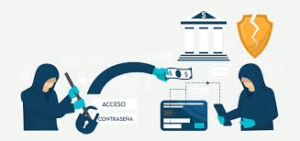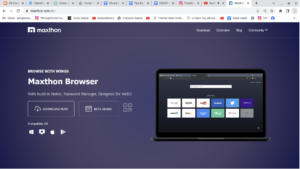Banking fraud is a widespread issue that impacts everyone, from individual consumers to major corporations. As technology advances and becomes increasingly embedded in our lives, so too do the tactics employed by fraudsters. Therefore, both banks and consumers need to remain vigilant about emerging fraud trends to enhance their protection.
In this article, we present a compilation of the top 10 banking fraud trends that experts anticipate will be significant in 2025.

Factors Contributing to the Rise in Banking Fraud
Several factors are driving the heightened risk of banking fraud, notably the transition to digital banking. This shift has created more avenues for fraudsters to gain access to sensitive information, including banking credentials. We have observed an uptick in phishing scams as individuals seek urgent assistance and information.
It’s important to note that online banking is not inherently less secure. Financial institutions are continually enhancing their fraud prevention strategies and management systems. However, a growing number of scammers feel emboldened to perpetrate fraud in the digital realm, often lacking the courage to do so face-to-face due to the perceived anonymity provided by a computer screen.
Moreover, while banks utilise advanced fraud detection technologies, many small and medium-sized enterprises lack such robust defences. This makes them particularly susceptible to fraudulent activities, which can pose risks not just to themselves but also to the broader banking ecosystem.

Current Landscape of Fraudulent Activities
Recent years have witnessed numerous fraud trends, with fraudulent activities ranking as the leading form of financial crime in various countries, including the U.K.
Simply put, fraud, and scams are lucrative endeavours that are unlikely to be caught or punished. In 2021, the Federal Trade Commission reported over 2.8 million instances of fraud in the United States alone.
Unauthorised Fraudulent Payments
Unauthorised, fraudulent payments refer to a range of deceitful activities that involve the illicit transfer of funds from an individual or business’s account without consent. Below are some prevalent trends associated with unauthorised, fraudulent payments.
Technical Support Scams
In technical support scams, fraudsters impersonate representatives from reputable technology firms. They may reach out via phone or email, alleging that your computer is infected with a virus or experiencing issues.
The scammer typically requests remote access to your device to “resolve” the supposed problem. During this process, they can capture personal data or financial information and may also impose a fee for this so-called “service.”

Mobile SIM Swap Fraud
Another growing concern is mobile SIM swap fraud. In this scheme, a fraudster takes control of your phone number by executing a SIM swap. They impersonate you to persuade your mobile provider to transfer your number to a new SIM card under their control.
Once they gain access to your phone number, they can intercept all calls and text messages and access any two-factor authentication linked to that number. This enables them to engage in fraudulent activities, such as accessing bank accounts or credit cards.

Account Takeover Fraud
One of the more severe forms of banking fraud is account takeover. In this scenario, the scammer acquires access to your bank or credit card account by masquerading as you and supplying sufficient personal details to bypass security protocols.
They will respond to security inquiries and alter PINs or login credentials. Consequently, they can empty your account or make unauthorised transactions. In extreme cases, they might even secure loans in your name.
Bank Insider Fraud
Fraud can also be perpetrated by insiders at banks, mainly if you maintain a substantial balance in your account. These individuals have access to confidential financial data, including account numbers and login information. When they believe you are not vigilant, they may siphon off small amounts over time.
This technique could be exploited for personal benefit, by a criminal group, or even traded on the dark web. The only effective way to combat such fraudulent activities is through ongoing vigilance and regular internal audits.
Phishing
Phishing stands as one of the longest-standing and most effective fraud schemes. While many are familiar with the notorious Nigerian Prince email scams, these tactics have since advanced and become increasingly refined.

Fraudsters often send emails or texts masquerading as reputable entities, like your bank, soliciting personal details or login credentials. These messages frequently include links to counterfeit websites that closely resemble legitimate ones.
Once they acquire this sensitive information, they can perpetrate identity theft or access your financial accounts.
Man-in-the-middle/Pharming
Another fraudulent tactic linked to phishing is the man-in-the-middle or pharming attack. In this scenario, the scammer places themselves between the victim and a legitimate organisation. For example, they might intercept communications or redirect you to a fraudulent site.
They will gather login credentials or personal data to gain a profit. This type of scam can be particularly perilous as it often goes undetected until significant damage has occurred.

Authorised Fraudulent Payments
Unlike previous fraud methods, authorised fraudulent payments involve the victim willingly approving a transaction. However, the perpetrator may have deceived them into doing so. The following banking fraud trends exemplify this category of authorised fraudulent payments.
Business Email Compromise
In a business email compromise scheme, the scammer impersonates someone in a position of authority within an organisation, such as a CEO or CFO. They may send an email asking for a funds transfer to a specific account that they control.
The unsuspecting victim, typically an employee trying to comply with directives, may not realise they have fallen victim to a scam until it is too late.

Invoice Deception
In this scheme, the perpetrator masquerades as a legitimate supplier or vendor and sends a fraudulent invoice to the target, seeking payment. The victim may not recognise the invoice as a scam and unwittingly process the payment.
For instance, if your company frequently receives invoices from a specific manufacturer, you might not hesitate to pay one that appears genuine.

Investment Deceits
Investment fraud occurs when scammers persuade individuals to invest in seemingly fantastic opportunities. They often promise substantial returns with minimal risk and may utilise misleading information or high-pressure tactics to secure funds from the victim. The unregulated nature of the cryptocurrency market has made it particularly susceptible to these fraudulent schemes.

Social Engineering Push Payments
This type of fraud involves tricking victims into willingly transferring money through various social engineering strategies. Scammers might impersonate government agencies demanding payments for fictitious fines or act as relatives in urgent need of financial assistance. Additionally, they may exploit crises by posing as charitable organisations soliciting donations.

Romantic Fraud
The rise of online dating and social networking has led to an increase in romance scams. Scammers create bogus profiles on social media platforms and engage in online relationships with their victims, ultimately persuading them to send money.
They often begin by catfishing—using false identities and pictures—and gradually earn the victim’s trust. Such scams can lead to significant financial loss and emotional distress for those affected.

Final Thoughts
Fraud tactics are continually evolving, making it crucial to remain informed and alert to safeguard ourselves and our finances. Be vigilant for any unusual requests or suspicious activity involving personal information, such as banking details, and always verify with reliable sources before taking action.

Maxthon
As the digital world evolves at a swift pace and our online engagements continually change, safeguarding personal security while navigating the expansive internet has become increasingly crucial. The complex network of interactions shaping our online experiences calls for a careful choice of web browser—one that emphasises security and privacy. Among the plethora of options, Maxthon emerges as a commendable alternative, offering users a reliable solution to these urgent concerns at no cost. This sophisticated browser comes equipped with a comprehensive array of built-in features, including an effective ad blocker and various anti-tracking tools—essential components aimed at enhancing your online privacy.
Maxthon Browser Compatibility with Windows 11
Maxthon’s support for Windows 11 further solidifies its position in the competitive realm of web browsers.
In a saturated market, Maxthon has carved out a distinctive presence, driven by its strong dedication to ensuring a secure and private browsing experience. With a keen awareness of the numerous threats present in the digital landscape, Maxthon takes proactive measures to safeguard personal information and online activities. By employing advanced encryption techniques, this browser ensures that sensitive data remains protected and confidential throughout all online interactions.

When it comes to boosting privacy during web navigation, Maxthon truly stands out. Each feature of this browser is meticulously crafted to enhance your privacy experience. Its robust ad-blocking functionality, comprehensive anti-tracking capabilities, and specialised incognito mode work harmoniously to eliminate disruptive ads and reduce tracking scripts that could compromise your browsing pleasure. As a result, users can navigate the internet with renewed assurance and safety. The incognito mode adds a layer of security, enabling users to browse the web more discreetly.
